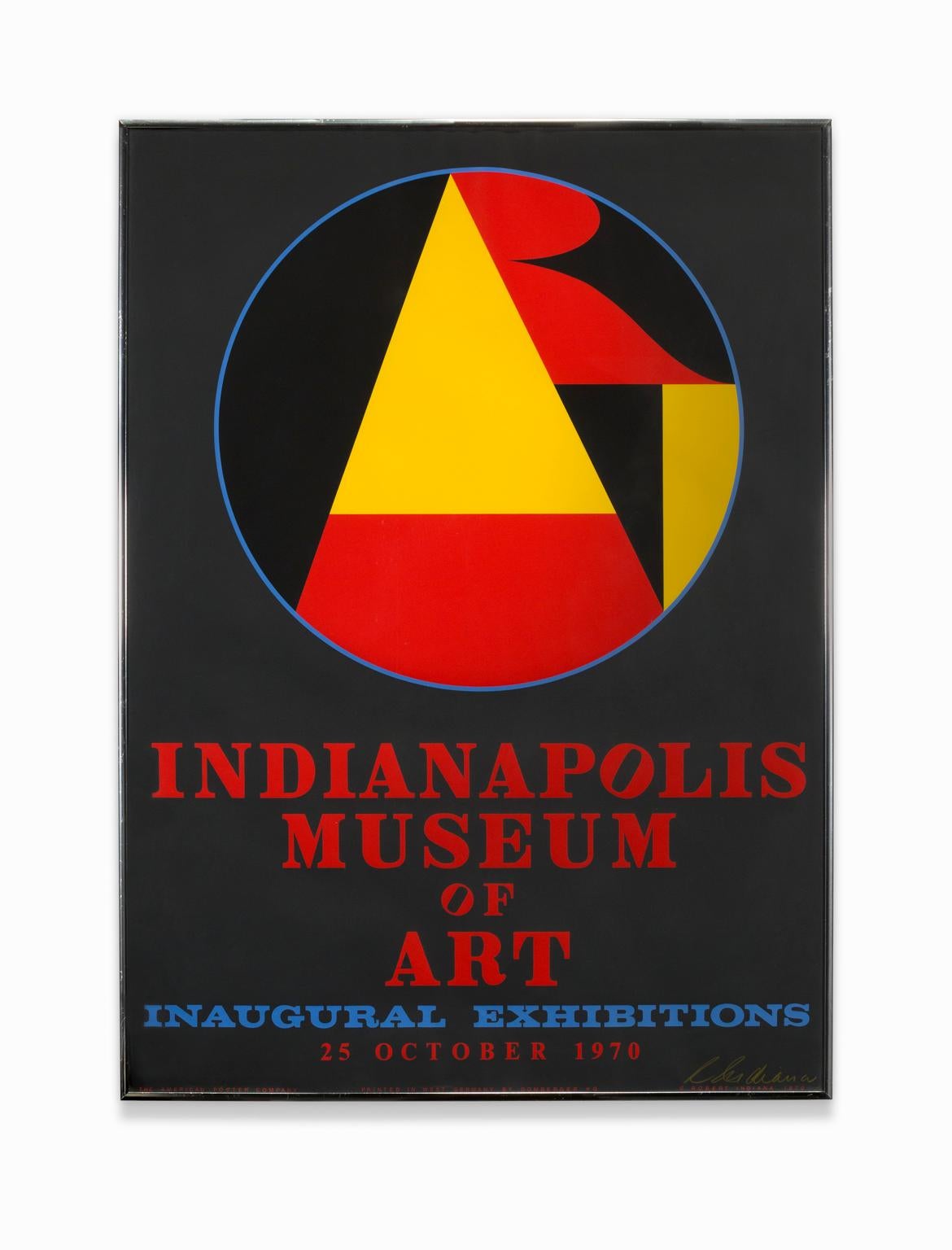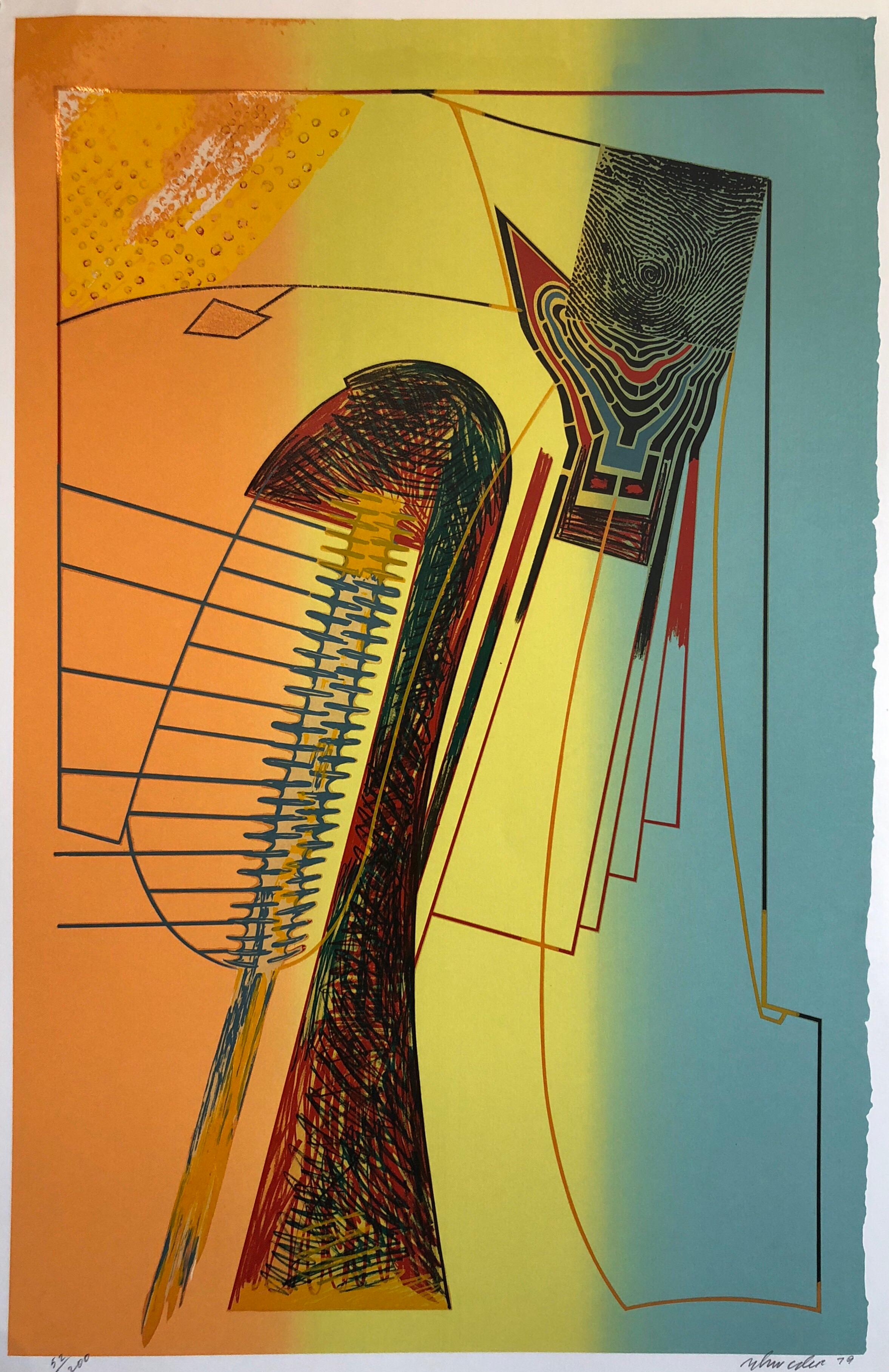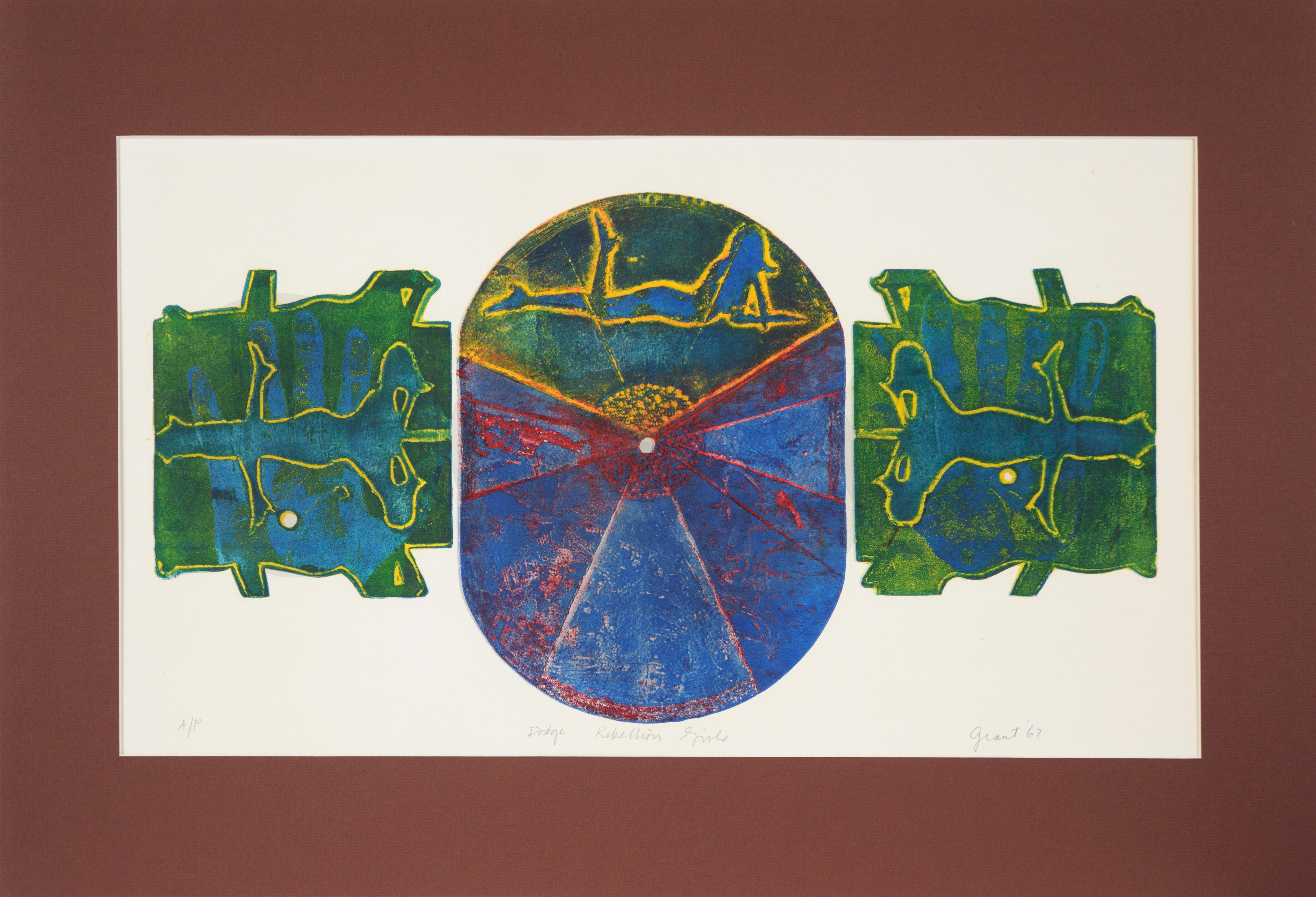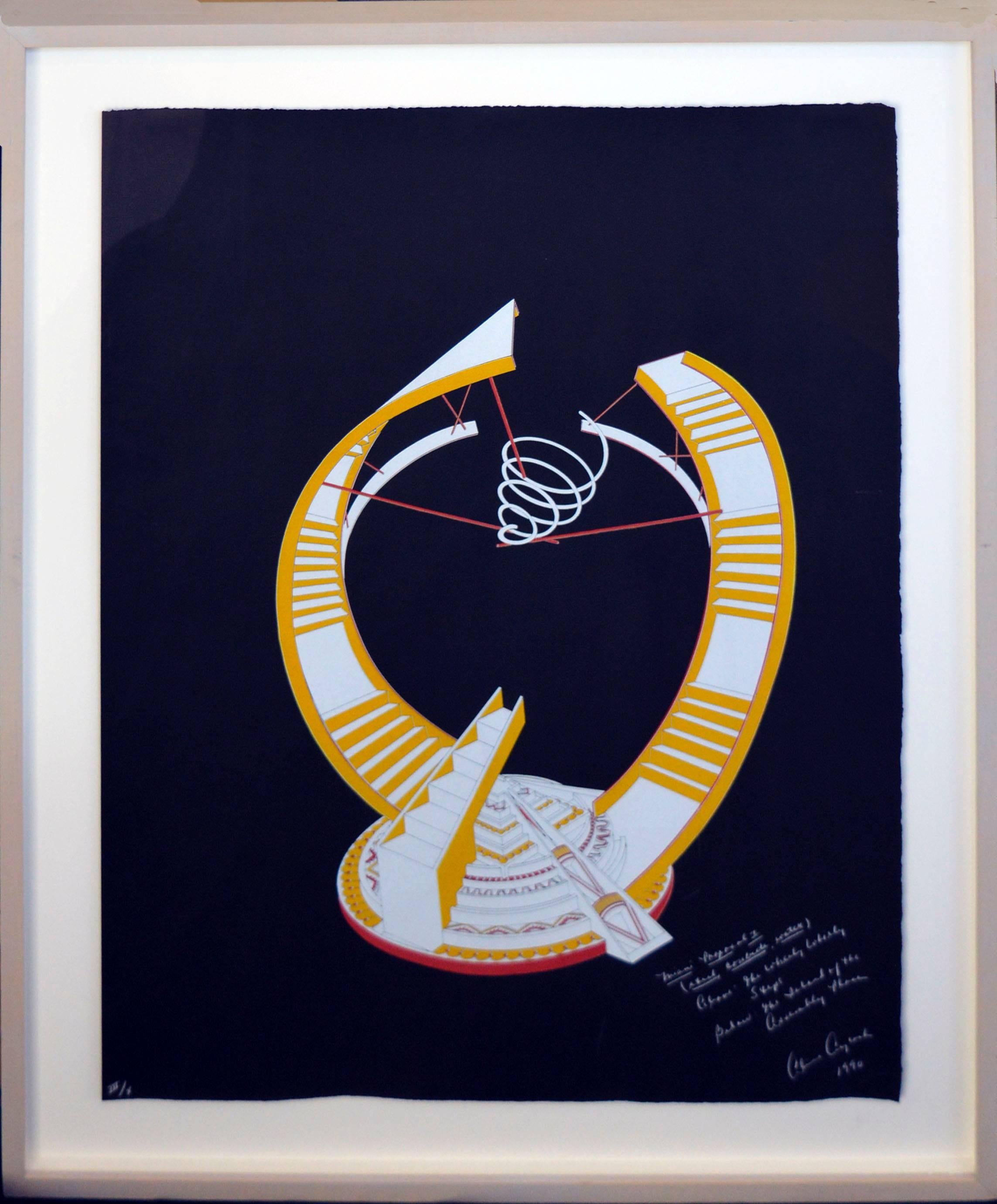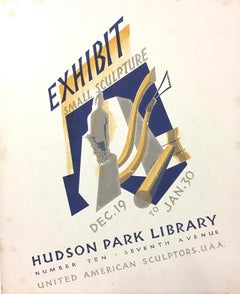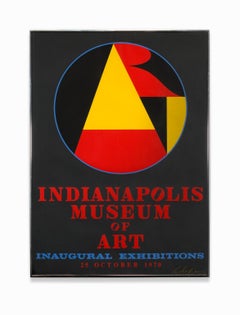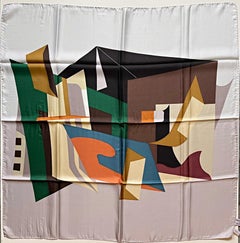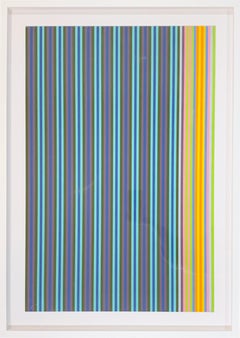
Series 1: Jack in the Box
View Similar Items
Want more images or videos?
Request additional images or videos from the seller
1 of 10
Gene DavisSeries 1: Jack in the Box1968
1968
About the Item
- Creator:Gene Davis (1920-1985, American)
- Creation Year:1968
- Dimensions:Height: 35.25 in (89.54 cm)Width: 25 in (63.5 cm)
- Medium:
- Movement & Style:
- Period:
- Condition:
- Gallery Location:Washington, DC
- Reference Number:Seller: GDJITBSP20211stDibs: LU54438620492
About the Seller
5.0
Platinum Seller
These expertly vetted sellers are 1stDibs' most experienced sellers and are rated highest by our customers.
Established in 1989
1stDibs seller since 2017
504 sales on 1stDibs
Typical response time: 2 hours
More From This SellerView All
- URGE Title PageBy KAWSLocated in Washington, DCArtist: KAWS Title: URGE Title Page Medium: Screenprint on Saunders Waterford 425gm HP hi-white Portfolio: URGE Year: 2020 Edition: 250 Frame Size: 21 1/2" x 17" Sheet Size: 17" x 1...Category
2010s Street Art Abstract Prints
MaterialsScreen
- Yaacov Agam Untitled Vertical OrchestrationBy Yaacov AgamLocated in Washington, DCArtist: Yaacov Agam Title: Untitled Portfolio: Vertical Orchestration Medium: Silkscreen Year: 1980s Edition: 23/54 Sheet Size: 29 5/8" x 8 3/4"...Category
1980s Abstract Abstract Prints
MaterialsScreen
- Comes A TimeLocated in Washington, DCArtist: Susumu Kamijo Title: Comes A Time Medium: 35 color silkscreen and 3 color woodblock on Somerset Velvet Newsprint Grey Date: 2022 Edition: 30/60 Frame Size: 42" x 35" Sheet Si...Category
2010s Contemporary Animal Prints
MaterialsScreen
- Untitled, from Vertical OrchestrationBy Yaacov AgamLocated in Washington, DCArtist: Yaacov Agam Title: Untitled Portfolio: Vertical Orchestration Medium: Silkscreen Year: 1980s Edition: 27/54 Sheet Size: 29 5/8" x 8 3/4"...Category
1980s Abstract Abstract Prints
MaterialsScreen
- Untitled, from Vertical OrchestrationBy Yaacov AgamLocated in Washington, DCArtist: Yaacov Agam Title: Untitled Portfolio: Vertical Orchestration Medium: Silkscreen Year: 1980s Edition: A.P. Sheet Size: 29 5/8" x 8 3/4" ...Category
1980s Abstract Abstract Prints
MaterialsScreen
- Untitled, from Vertical OrchestrationBy Yaacov AgamLocated in Washington, DCArtist: Yaacov Agam Title: Untitled Portfolio: Vertical Orchestration Medium: Silkscreen Year: 1980s Edition: H.C. 12/18 Sheet Size: 29 5/8" x 8...Category
1980s Abstract Abstract Prints
MaterialsScreen
You May Also Like
- Anthony Velonis, Exhibit, Small SculptureBy Anthony VelonisLocated in New York, NYAnthony Velonis (1911-1997) was an extremely innovative artist. He learned the technique of screen printing, also known as silkscreen, (for which he also coined the term serigraphy) while working with a wall paper manufacturer. Unusual for fine prints, the image is made by the artist in the same direction as it will print, as the colored inks are forced through fabric (silk) directly onto a paper surface. (He also invented a machine that could print onto column-shaped items such as cocktail glasses or make-up bottles and a rack system for drying sheets of paper with wet ink in which the sheets are just inches apart.) The technique allows extreme versatility on the part of the artist and the ink tends to sit on top of the paper rather than soak into the fibers. In 1934 Velonis used this new technique on Mayor LaGuardia's NYC Poster...Category
Mid-20th Century American Modern Abstract Prints
MaterialsScreen
- "Indianapolis Museum of Art Inaugural Exhibitions", Color Silkscreen, SignedBy Robert IndianaLocated in Detroit, MI"Indianapolis Museum of Art Inaugural Exhibitions", 25 October 1970, is an eye popping large bold colorful geometric abstract silk screen. It is signed on the lower right. Robert Indiana, one of the preeminent figures in American art since the 1960s, played a central role in the development of assemblage art, hard-edge painting, Pop art, Neo-Dada, American Modernism and Modern Art. A self-proclaimed “American painter of signs,” Indiana created a highly original body of work that explores American identity, personal history, and the power of abstraction and language, establishing an important legacy that resonates in the work of many contemporary artists such as Andy Warhol, Keith Haring, Roy Lectenstein, David Hockney, Romero Britto, Richard Hamilton and Robert Rauschenberg who make the written word a central element of their oeuvre. Robert Indiana was born Robert Clark in New Castle, Indiana on September 13, 1928. Adopted as an infant, he spent his childhood moving frequently throughout his namesake state. At 14 he moved to Indianapolis in order to attend Arsenal Technical High School, known for its strong arts curriculum. After graduating he spent three years in the U.S. Air Force and then studied at the Art Institute of Chicago, the Skowhegan School of Sculpture and Painting in Maine, and the Edinburgh College of Art in Scotland. In 1956, two years after moving to New York, Indiana met Ellsworth Kelly, and upon his recommendation took up residence in Coenties Slip, where a community of artists that would come to include Kelly, Agnes Martin, James Rosenquist, and Jack Youngerman had studios. Indiana, like some of his fellow artists, scavenged the area’s abandoned warehouses for materials, creating sculptural assemblages from old wooden beams, rusted metal wheels, and other remnants of the shipping trade that had thrived in Coenties Slip. The discovery of 19th century brass stencils led to the incorporation of brightly colored numbers and short emotionally charged words onto these sculptures as well as canvases, and became the basis of his new painterly vocabulary. Although acknowledged as a leader of Pop, Indiana distinguished himself from his Pop peers by addressing important social and political issues and incorporating profound historical and literary references into his works. In 1964 Indiana accepted Philip Johnson’s invitation to design a new work for the New York State Pavilion at the New York World’s Fair, creating a 20-foot EAT sign...Category
1970s American Modern Abstract Prints
MaterialsPaper, Ink, Screen
$1,760 Sale Price20% Off - Eggbeater 1: 34 Square inch Limited Edition Silk Scarf, for the Whitney MuseumBy Stuart DavisLocated in New York, NYStuart Davis Eggbeater No. 1 Silk Scarf, ca. 1980 100% silks scarf 34 × 34 inches (the smaller measurements shown are after the scarf is folded, to minimize shipping costs, as it sh...Category
Mid-20th Century American Modern Abstract Prints
MaterialsSilk, Screen
- Prefatio, from the Graphic Tectonics SeriesBy Josef AlbersLocated in New York, NYEdition: 34. This impression is one of only two proofs printed on graph paper. Printed by Reinhard Schumann, Hickory, North Carolina. Reproduced in Formulation: Articulation (portfol...Category
20th Century American Modern Abstract Prints
MaterialsScreen
- Surrealist Architectural Landscape "Fall for it" 1970s Chicago ModernistBy William SchwedlerLocated in Surfside, FLThis serigraph has never been framed. Chicago born Modernist. Showed at Andrew Crispo Gallery and Tibor de Nagy Gallery. Schwedler could not help but be influenced by the local artistic milieu particularly with those contemporaries and friends who formed the Hairy Who in the Mid - 1960's Schwedler's Paintings from the beginning to his young end were ripe with a surreal, abstract poetry filled with references to landscapes, architecture, texture (cracked), line (broken,chopped, and Pulled to pieces), and delicate, but voluptuous color. Studying at the Art institute of Chicago with his friends Cynthia Carlson, Jim Nutt...Category
1970s American Modern Abstract Prints
MaterialsScreen
- Modernist Figurative Pop Art Etching and Aquatint "the Artist" Michael MazurBy Michael MazurLocated in Surfside, FLMichael Mazur "The Artist" Hand signed and editioned from the edition of 50 1967 Michael Burton Mazur (1935-August 18, 2009) was an American artist who was described by William Grimes of The New York Times as "a restlessly inventive printmaker, painter, and sculptor." Born and raised in New York City, Mazur attended the Horace Mann School. He received a bachelor's degree from Amherst College in 1958, then studied art at Yale. Mazur first gained notice for his series of lithographs and etchings of inmates in a mental asylum, which resulted in two publications, "Closed Ward" and "Locked Ward." Over the years, he worked in printmaking and painting. His series of large-scale prints for Dante's Inferno won critical acclaim, and were the subject of a traveling exhibition organized by the University of Iowa in 1994. Later he concentrated on creating large, lyrical paintings which make use of his free, gestural brushwork and a varied palette. Some of these paintings were seen in an exhibition of 2002 at Boston University, "Looking East: Brice Marden, Michael Mazur, and Pat Steir." (See also Susan Danly, "Branching: The Art of Michael Mazur," 1997). The Museum of Fine Arts, Boston, has acquired a definMichael Mazur received a B.A. from Amherst College in 1957, studying in his senior year at the Accademia di Belle Arti in Florence, Italy. He went on to earn both a B.F.A. and an M.F.A. from the Yale School of Art and Architecture in 1961. Mazur's first teaching job was at the Rhode Island School of Design from 1961 to 1964. He was awarded a Guggenheim Foundation fellowship for 1964–65. From 1965 to 1976, he taught at Brandeis University, and from 1976 to 1978 at Harvard University. As an artist, teacher, and writer, Mazur has been active in reviving the monotype process. He contributed an essay to the pioneering exhibition catalogue The Painterly Print, published by the Metropolitan Museum of Art in 1980. Mazur recently chaired the New Provincetown Print...Category
Early 2000s American Modern Abstract Prints
MaterialsLithograph, Screen
Recently Viewed
View AllMore Ways To Browse
Vincent Gordon
Sam Calder
Jag New York Diamond
Jean Michel Basquiat Tiffany
Jens Lund
Jerry Opper On Sale
Guggenheim Arts Collection Rug
Juilliard Poster
Koen Vanmechelen
Larry Zox On Sale
Le Lagon
Niki De St Phalle
Noe Badillo
Stella Rubin
Tapis Miro
Sister Corita Book
Sonia Delaunay On Sale
Renaud Allirand On Sale

